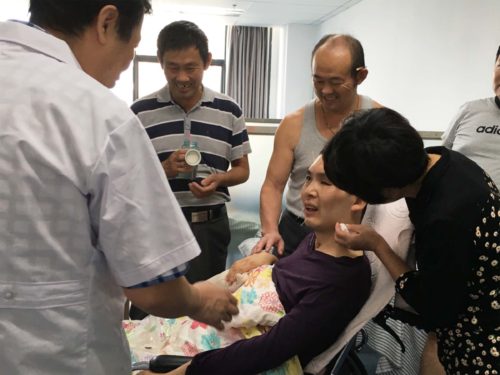To determine the role of acupuncture therapy in treating experimental gastric ulcers in rats.
Twenty-eight adult male Sprague-Dawley rats were randomly divided into four groups (pre-acupuncture group; acupuncture group; para distance-acupuncture group; and control group), and pre-acupuncture, para distance acupuncture, and control groups received 5 µL acetic acid (200 mL/L HAc) injection after the same course of electroacupuncture (EA) treatment (4 Hz, 0.6 mA, 0.45 ms, 45 min for 4 d). The rats in these three groups recovered within 4 d. The acupuncture group received EA therapy for 4 d, after HAc injection. The stomach was dissected to compare the pathological structures of ulcers. Also, c-Fos activation in the nuclei of the solitary tract (NTS) was observed under a microscope after regular immunohistochemistry staining of brain stem sections.

Acupuncture and oral ulcer
In the latter group, the number of ulcers was much lower. The gastric ulcer area was consistent with the
Histopathological results indicate that pre-acupuncture had a pronounced therapeutic effect on gastric ulcers. Acupuncture had a very modest effect, and para-distance acupuncture did not affect gastric ulcers. No therapeutic effect was found in the control group. Fos-Li neurons in NTS induced by noxious gastric ulcer showed a significant difference between pre-acupuncture and control groups.
To compare the therapeutic effects of acupuncture and routine Western medicine is a recurrent oral ulcer of the type of accumulation of heat in the heart and spleen.
The total effective rate was 83.8% in the treatment group and 48.6% in the control group, with a very significant difference between the two groups (P<0.01).
The therapeutic effect of acupuncture is significantly better than that of the control group, and acupuncture is an effective therapy for recurrent oral ulcers of the type of accumulation of heat in the heart and spleen.
Research Three
To find an effective method for the treatment of oral ulcers in the premenstrual period.
Seventy-nine cases were randomly divided into a treatment group (n=48) and a control group (n=31). They were treated by acupuncture and moxibustion plus Chinese medicine and simple Chinese medicine, respectively. Their therapeutic effects were observed.
The effective rate was 91.7% in the treatment group and 64.5% in the control group, with a significant difference between the two groups (P < 0.05).
Acupuncture and moxibustion combined with Chinese medicine have a better therapeutic effect on an oral ulcer in the premenstrual period.
Research Four
ACUPUNCTURE: REVIEW AND ANALYSIS OF REPORTS ON CONTROLLED CLINICAL TRIALS
ACUPUNCTURE: REVIEW AND ANALYSIS OF
REPORTS ON CONTROLLED CLINICAL TRIALS